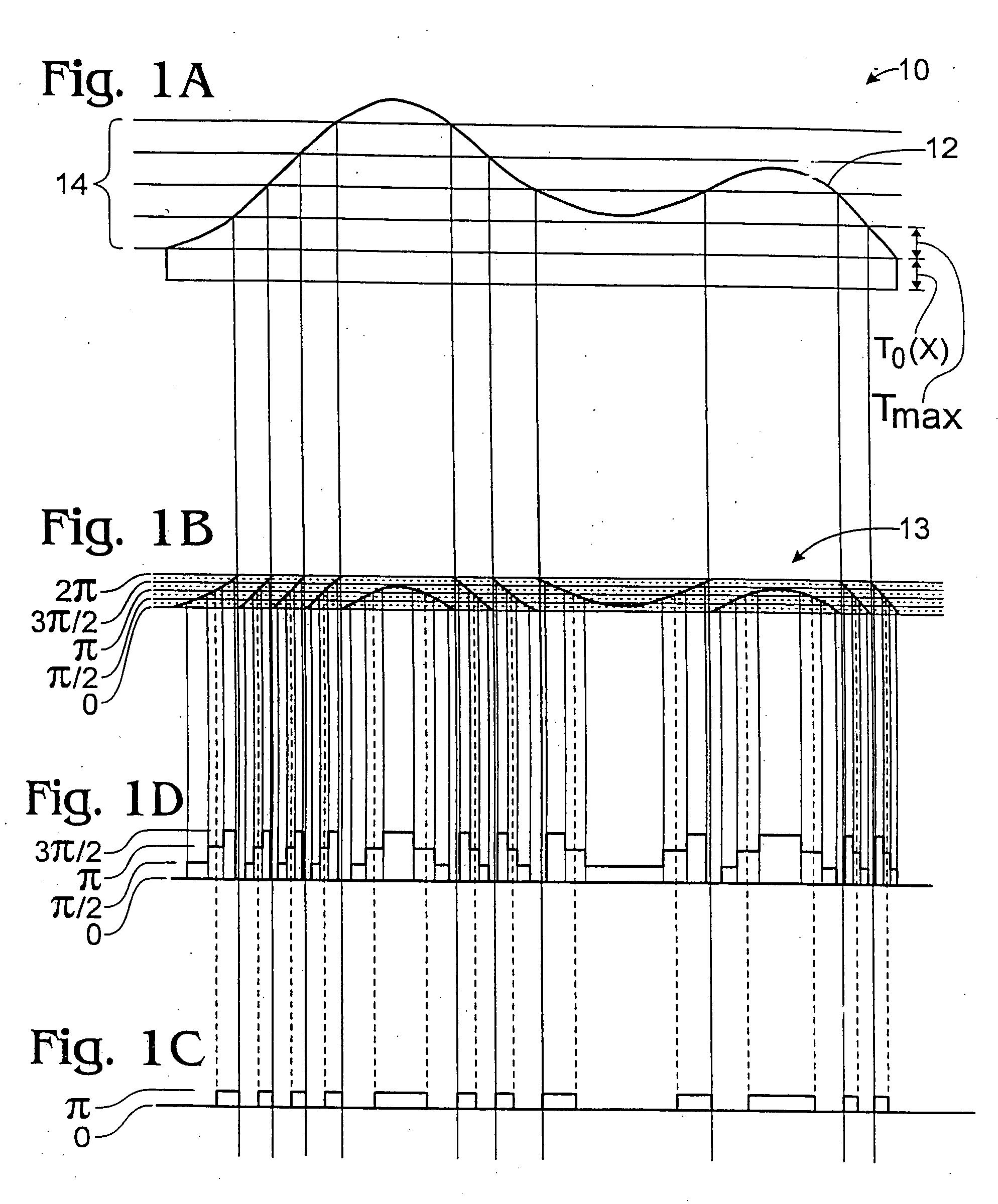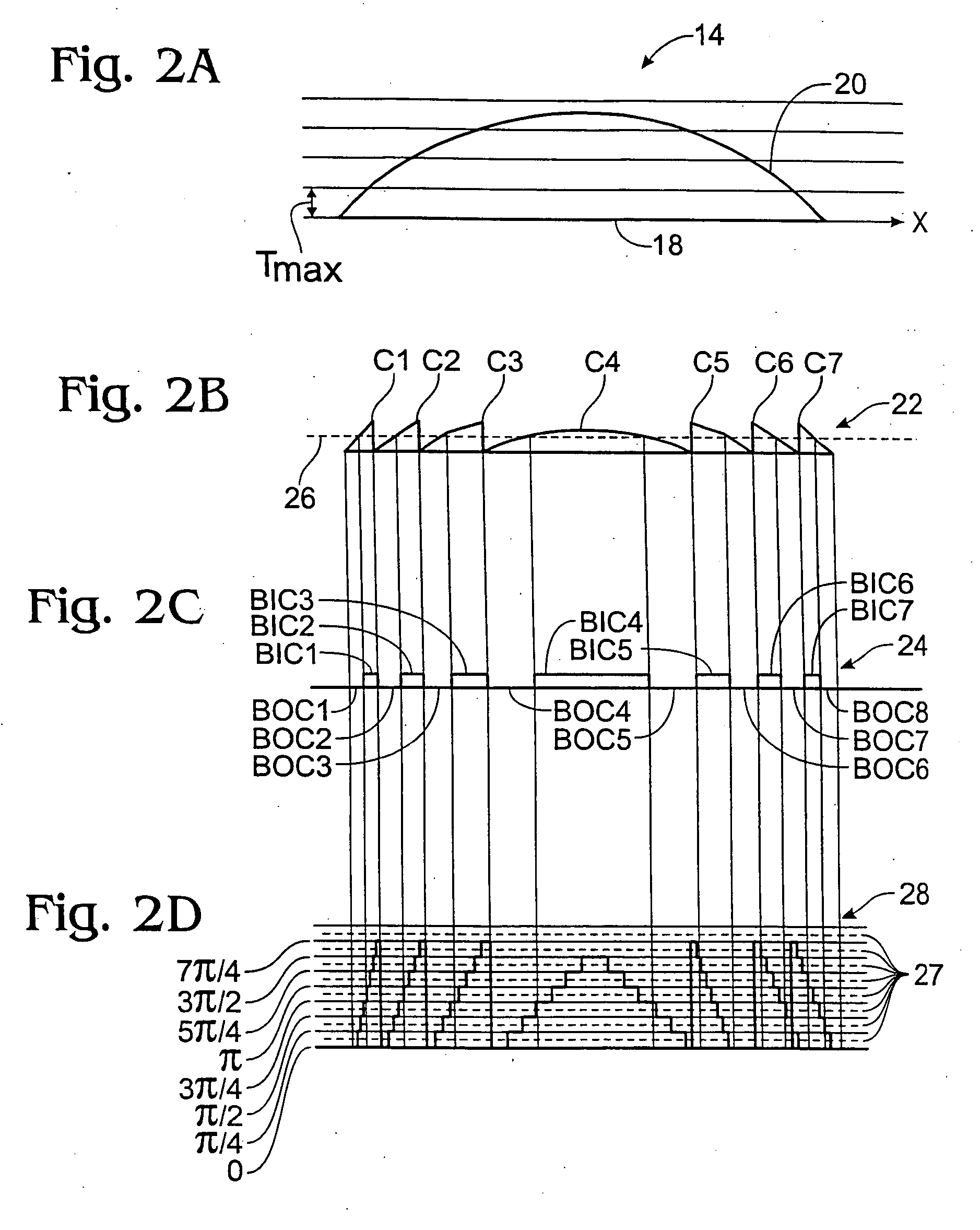Dynamic diffractive optical transform
a technology of optical transform and dynamic diffractive wavefront, applied in the field of dynamic diffractive optical transform, can solve problems such as significant diffraction
- Summary
- Abstract
- Description
- Claims
- Application Information
AI Technical Summary
Benefits of technology
Problems solved by technology
Method used
Image
Examples
Embodiment Construction
Turning first to FIG. 1A, an arbitrary optical transform is represented by a corresponding arbitrary optical element 10 of uniform index of refraction having a profile 12 along an axis x, the profile 12 representing the thickness of-the element. Since the thickness of an optical element is typically much greater than the wavelength λ of light in the medium of the element, an amount of material under the profile 12 equal in thickness to some positive integer number of wavelengths of light (2πN radians, where N is a positive integer) can be removed from the element and the remainder lowered, yet the element will have substantially the same effect on that wavelength of light. That is, an element having a profile according to the following equation would produce the same result:
T(x)=T0(x)+F(x) (mod Tmax)
where T(x)=the thickness of the element with respect to the x axis, T0(x)=the thickness of the base of the element, F(x)=the shape profile 12 in FIG. 1A with respect to the x axis, ...
PUM
| Property | Measurement | Unit |
|---|---|---|
| voltage | aaaaa | aaaaa |
| focal length | aaaaa | aaaaa |
| electric potential | aaaaa | aaaaa |
Abstract
Description
Claims
Application Information
 Login to View More
Login to View More - R&D
- Intellectual Property
- Life Sciences
- Materials
- Tech Scout
- Unparalleled Data Quality
- Higher Quality Content
- 60% Fewer Hallucinations
Browse by: Latest US Patents, China's latest patents, Technical Efficacy Thesaurus, Application Domain, Technology Topic, Popular Technical Reports.
© 2025 PatSnap. All rights reserved.Legal|Privacy policy|Modern Slavery Act Transparency Statement|Sitemap|About US| Contact US: help@patsnap.com



